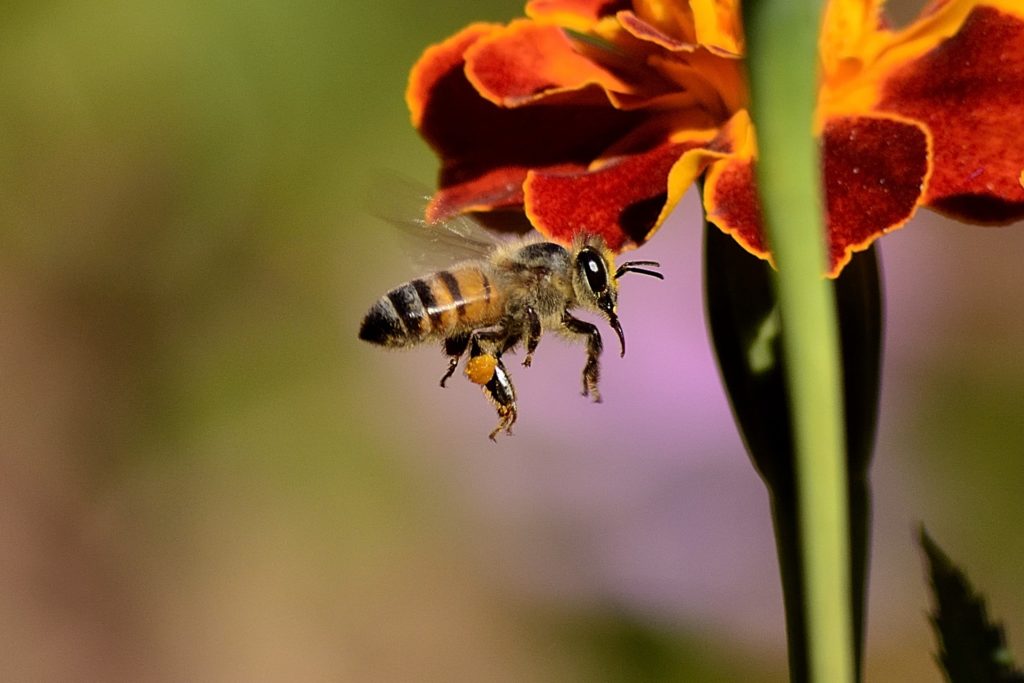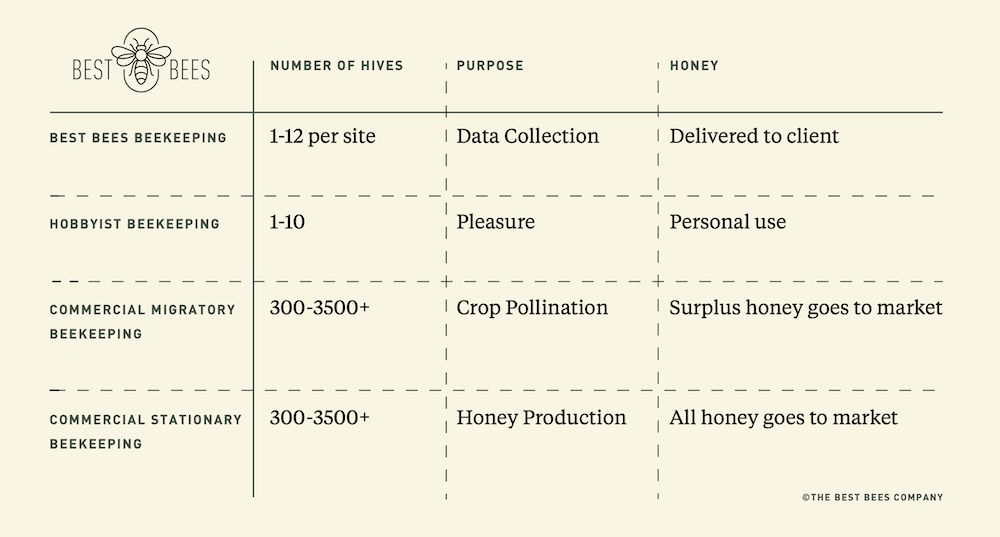Past entries of both the Best Bees blog and the Urban Beekeeping Laboratory blog have focused on specific bee related topics and issues, but we’ve rarely if ever posted an overview of both the problems facing bee populations and their current solutions and mitigations. We were lucky to receive this entry from guest writer Christy Erickson, outlining the current status of bee health, and what we can do to help.
Within the last few decades, the safety of bees has been a frequent topic of discussion in scientific and nonscientific communities. Bees play an important role in the world and any concerns about them need to be taken seriously. As one of nature’s major pollinators, bees are a key part of agriculture and food production. Worldwide, almost a third of the crops grown are dependent on pollinators like bees in order for the plants to produce anything. In the United States alone, there are over 100 pollinator-dependent crops planted every year with an economic value of around $20 billion. That does not include non-plant based products like honey and wax that humans also use. Just in terms of food, humans would be in serious trouble without the involvement of bees and other pollinators.
Bees are not just important to food production either, as they are also necessary in the life cycle within the ecosystem. As plants are stationary, they need assistance from other forces to reproduce—a.k.a. to be pollinated. Pollinators like bees gather and deposit genetic material (e.g. pollen) from plants as they move from plant to plant, simply by coming in contact with it. Not only does this allow for plant reproduction to occur, but it also helps promote biodiversity as they often do this for thousands of plants in an area spanning miles. For example, the pollen a bee deposits on a flower may have come from another one that’s miles away. This diversity allows plants to be stronger and healthier, making them able to thrive and withstand harmful diseases. This benefits not just edible plant life, but non-edible plants that may serve other purposes to humans and in nature.
Why the need to justify their importance and the concern for their safety? For one thing, bee populations have been steadily declining throughout the world both in the wild and in commercial or private production. Some theories place the blame on the increased usage of pesticides that kill bees in addition to undesirable pests in agriculture practices. Others note the intentional and unintentional destruction of natural habitats and hives by humans who find them in places like their homes, yards, and farms, and in urban areas. There are also pests, like the varroa mite, that ravage and destroy hives unless extensive care and treatment are administered. Nosema disease is a newer concern and has recently begun to spread into European honeybee populations. Nosema is caused by two strains of fungal parasite and can impact entire colonies by shortening their population’s collective lifespan and eliminating the brood rearing stage for many mature bees. Many of these threats are curbed or addressed by beekeepers, both professional and hobbyists, but it’s not a practice that many people are taking up.
So what can be done to help the bees and curb some of the damage if you are not a beekeeper or otherwise experienced in such matters? Most experts recommend avoiding pesticide usage around your home, leaving hives and colonies alone, and providing shallow dishes or plates of water for bees to drink. You can also contact a professional beekeeper to remove hives and colonies that pose a danger to you and your family/home, or that are in danger themselves. Planting bee-friendly plants with bright colors around your home and garden is also recommended, and is also the most common way of helping bees.
Another popular option, and a preferred alternative to a traditional garden for those who may have space limitations or disabilities, are container gardens. These typically are one plant per container, although multiples can be planted based on the type and spread of the plant and the size of the container. Container gardens tend to take up less space, are easier to manage, and can be done even on a tight budget compared to a traditional garden, but still have the same effect. When you plan your container garden, take into account factors such as where it will be (available space, accessibility, etc.), what you want to plant, and how much, as well as the care requirements for what you plant. Look at plants that have a single flower (higher nectar production), are native to your area, and will last the entire growing season to allow for a constant food source. Be sure to keep your containers in a spot where they can thrive and where the bees won’t be disturbed.





